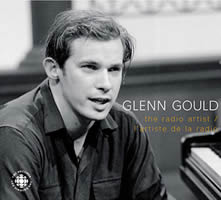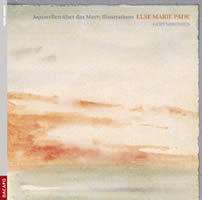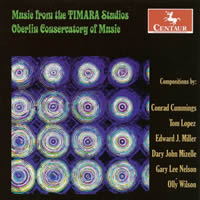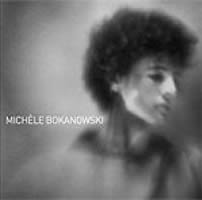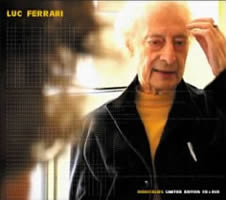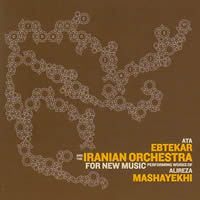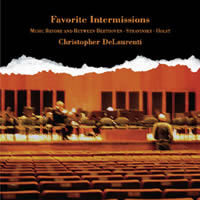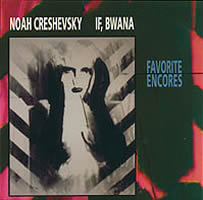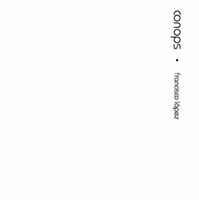EA Bucket 9.
|
Grant Chu Covell [July 2009.]
“Glenn Gould: The Radio Artist.” Glenn GOULD: The Idea of North (1967); The Latecomers (1969); The Quiet in the Land (1977); Casals: A Portrait for Radio (1973-74); Stokowski: A Portrait for Radio (1970-71). CBC Records PSCD20315 (5 CDs) (http://www.cbc.ca/). Distributed in the US by Naxos (http://www.naxos.com/). Reflecting his keen mind and spirit, Gould’s five radio documentaries marshal texts, interviews, ambient sounds and music. The “Solitude Trilogy” considers three once-isolated Canadian populations. In The Idea of North, settlers discuss what compelled them to work and live in near-Arctic Canada. In The Latecomers, Newfoundlanders discuss their relationships with their forbidding island and the mainland. The Quiet in the Land visits with Mennonites in Manitoba. Each installment reveals how these remote folk have become more integrated into the main, and how their self-images have changed. One would think that Canadians perpetually wrestle with identity issues. Gould’s manipulation is ever apparent. In fact, you may wonder — especially in The Idea of North — whether every Canadian proselytizes in the same alternately charming and pretentious manner. I’m inclined to think Gould wrote or influenced much of the text. Oftentimes sounds overwhelm the speakers, e.g., the Finale to Sibelius’ Fifth steamrolling everyone at The Idea of North’s conclusion. The Casals and Stokowski programs are more straightforward, especially as the speakers can be identified. Both contain unexpected jumps and cuts. Stokowski’s Portrait is more collage-like with orchestral music often intruding. In the Casals Portrait, the cellist’s own words come as a welcome relief from author Albert E. Kahn’s stilted narration. (Did Gould write his part too?) Excerpts from Casals’ understandably forgotten oratorio El Pessebre scroll past. He did have particular musical tastes.
Else Marie PADE: Aquarellen über das Meer I-XXI (1968-71); Illustrations (1995). Gert Sørensen (perc), Helen Davies Mikkelborg (harp), Richard Krug (speaker). Dacapo 8.226544 (http://www.dacapo-records.dk/). Distributed in the US by Naxos (http://www.naxos.com/). In 21 electronically collaged miniatures, Pade manipulates Georg Sønderlund Hansen’s poem, Das Meer. Recitation delineates swirling layers of percussion, piano and infrequent harp. Pade wrote a detailed score and then worked with the musicians to create superimposed recordings to which were added white noise and other effects. Rather than a serene expanse, Pade’s is a sea that capsizes ships and erodes shorelines. The four Illustrations (The Firmament, The Palace of the Sea King, Fairyland and King Winter) are derived from Pade’s pioneering concrete and electronic music in the 1950s and ’60s. We visit a land of fairy tales with Jung and Freud as guides. While some recognizable instrumental sounds inform King Winter, for the most part these remain eerie expanses.
“CDCM Computer Music Series Volume 37: Music from the Oberlin Conservatory of Music TIMARA Studios.” Olly WILSON: Piano Piece* (1969). Gary Lee NELSON: Jabber (2006); To the Edge† (1992). Conrad CUMMINGS: Zephyr’s Lesson†† (1984). Tom LOPEZ: The Death of the Moth‡ (2003). Edward J. MILLER: Seven Sides of a Crystal** (1984). Dary John MIZELLE: Samadhi (1978). Thomas Fosnocht* (pno), Peter Takács** (pno), Deborah Sunya Moore† (marimba), Elise Roy†† (fl), Steuart Pincombe†† (vlc), Jennifer Torrence†† (perc), Oberlin Contemporary Music Ensemble‡, Tim Wiess (cond.). Centaur CRC 2938 (http://www.centaurrecords.com/). Distributed in the US by Qualiton (http://www.qualiton.com/). As an Oberlin alumnus, I took a class with one of the composers represented here and lessons with another. I also graduated the same year as a third but do not recall his work. That said, composition majors like myself were always wary of the Technology in Music and Related Arts (TIMARA) program, largely because its members had first dibs at signing out the electronic music studios. Further, we pencil-pushers couldn’t quite figure out what “related arts” amounted to. I don’t recall much in the way of video or choreography back in the late ’80s. It being Oberlin, needlepoint, flower-arranging or lyric Romantic poetry probably would have filled the bill. It’s gratifying to see that Oberlin has been added to the Consortium to Distribute Computer Music’s (CDCM) grand scheme. Some fine composers and musicians have passed through its portals, with this release reflecting their range. The big surprise is Wilson’s dynamic 1969 Piano Piece for piano and tape, the recorded sounds of which wear well. I recall Miller’s vibrant Seven Sides of a Crystal from various concerts. Then as now, I can’t quite reconcile the program note with the bright and rhythmic music. Cummings made a splash with pieces such as Positions 1956, a setting of texts from 1950s marriage manuals. His Zephyr’s Lesson wraps “intentionally primitive electronic sounds” around a sweet minimalist center. Nelson’s Jabber has the composer reading Lewis Carroll. To the Edge is a solo marimba piece derived from mathematical formulae. Launched with tuning instruments, Lopez’s The Death of the Moth, passing through turbulence, teases expectations. Mizelle’s Samadhi is an early example of digital sound synthesis.
Michèle BOKANOWSKI: Trois chambres d’inquiétude (1975-76); Tabou (1983-84); Phone Variations (1986-88). Trace Label Trace 028 (http://www.tracelab.com/). Any avid CD collector is bound to boast about snagging long-sought-for items. The rarer, more enduring pleasure is to stumble across an unknown vein, to discover something wonderful to which you’d been previously oblivious. For example, I will snap up any empreintes DIGITALes (http://www.empreintesdigitales.com/) item I don’t already have. Thus I discovered Bokanowski’s enthralling 1994 Cirque (IMED-9525-CD). The composer’s impeccable résumé begins with the discovery Pierre Schaeffer’s À la recherche d’une musique concrète, thence to studies with Michel Puig, Schaeffer and Eliane Radigue. Along the way she crossed paths with Michel Chion, and scored her husband Patrick Bokanowski’s films, including L’Ange (1976-79; Trace Label Trace 017). Bokanowski works in the ea cabinet that juggles oneiric states, dreams and the unconscious. There are some effects which prefigure more recent drone and subtle electronic developments. Her creations are a drop-everything, engrossing listen. The techniques seem simple: delicately seasoned loops precisely transitioned. The juxtapositions and raw materials indicate a poet of great imagination and virtuosity. Bokanowski knows how to encircle without crowding. Trois chambres d’inquiétude was on a 2001 Elevator Bath (EEAOA 07) release, and Tabou appeared on Cinéma pour l’oreille (MKCD 003) in 1992. Trois chambres in three movements leads us into an intimate world populated with gently repeated mechanical noises and human artifacts. Occasionally employed by choreographers, Tabou includes processed speech. The notes credit a violin and organ. Nothing is hurried; absorb this at your leisure. It would seem that every ea composer does a phone piece or at least thinks about it. Phone Variations skillfully manipulates answering machine messages and telephone sounds to thwart the anticipated passive / active, question / answer. Snippets of dance music filter through (jazz, waltzes, etc.), perhaps to suggest communication as an aspect of dance. Trace Label also carries Pour un pianiste (1973-74) on Trace 021, 17:35 of febrile intersections of Gérard Frémy at piano and prepared piano. There’s also a version for live pianist and tape. All three Trace releases are absolutely necessary.
Luc FERRARI: Rencontres Fortuites (2003); Tautologos III (1969); Didascalies (2004). Jean-Philippe Collard-Nevin (pno), Vincent Royer (vla). Sub Rosa SR 261 (1 CD and 1 DVD) (http://www.subrosa.net/). Distributed in the US by Forced Exposure (http://www.forcedexposure.com/). This set documents Ferrari’s last work: not just his last composition, but his last studio work as well. This Tautologos III was constructed July 9-10, 2005. Ferrari died on August 22. The DVD’s film, Luc Ferrari facing his Tautology: two days before the end, revealing how Tautologos III was put together, is a fascinating document about improvisation, listening and the labor that goes into making a structured example. The CD’s three pieces utilize the skills of pianist Collard-Nevin and violist Royer, who are asked to do some strange things indeed. I am amazed at the simplicity of Ferrari’s materials, how he achieves violence in simultaneity with unsettling humor. Rencontres Fortuites plays bumper cars with the viola-piano duo and tapes Ferrari had apparently forgotten about. There’s an extended section balancing an orange juicer and a sighing woman that will offend or amuse. Tautologos III is a process piece, the assemblage of which is explained on the DVD. The behind-the-scenes look doesn’t diminish the work’s surprises or power. The through-composed Didascalies opens as if minimal, building to a climactic crescendo. A very satisfying Ferrari release — the CD + DVD package is apparently a special edition, so act quickly.
“Ornametalism: Ata Ebtekar and the Iranian Orchestra for New Music Performing Works of Alireza Mashayekhi.” Alireza MASHAYEKHI / Ata EBTEKAR: Var comps (2005-08). Sub Rosa SR284 (http://www.subrosa.net/). Distributed in the US by Forced Exposure (http://www.forcedexposure.com/). Close study of this digipak’s seven panels doesn’t quite explain what goes on in this unclassifiable, unpredictable, enormously satisfying release. Alireza Mashayekhi’s original acoustic music is transformed electronically into different pieces by Ata Ebtekar. The Iranian Orchestra for New Music and various soloists (cellist Sanam Gharacheh and pianist Farimah Ghavamsadri are singled out) are sampled and processed to create different textures in a technique called “electrocuted,” which is normally defined as killed by electricity. For Western ears, the whine of ring modulation is unmistakable, but the nuts and bolts are wholly foreign. Some of what filters though sounds like Liszt improvising an Eastern rhapsody. Elsewhere metallic sounds suggest percussion melting away. Rhythms don’t appear to align with Western or stereotypical Persian styles.
“Favorite Intermissions.” Christopher DeLAURENTI: Var. comps. GD Stereo GD019 (http://www.gdstereo.com/). Over a period of several years, DeLaurenti collected intermission sounds — orchestral musicians warming up and audience noise. The approach is chaste: These are surreptitiously acquired recordings of events not normally regarded as productive grist. I’ve always fancied intermission noise — it’s fun to hear players practicing excerpts which don’t appear in the second half — along with the radio’s background noise just before the announcer’s return. DeLaurenti wants us to consider these moments as compositions in their own right. The intermissions are of variable length and recording quality. Some contain the crescendo of an audience finding its seats. I’m convinced one track preserves the Boston Symphony Orchestra in Symphony Hall, Boston. The original release brought DeLaurenti some modest attention, including coverage in the big papers. The first pressing had cover art which imitated a leading label’s familiar yellow escutcheon, since altered to avert legal action.
“Favorite Encores.” Noah CRESHEVSKY: Mari Kimura Redux (2007); Shadow of a Doubt (1999-2000); Intrada (2007); Favorite Encores (2001). If, Bwana (Al MARGOLIS): Xyloxings (2007); Scraping Scrafide (2006); Cicada #4: Version Barnard (2006). Pogus P21049-2 (http://www.pogus.com/). “Favorite Encores” arrays two composers’ tape pieces. Creshevsky constructs elegant rhythmic collages under the umbrella of “hyperrealism,” recognizable sounds handled in ways that are “exaggerated or excessive.” Mari Kimura Redux shreds snippets of violinist Mari Kimura into compelling patterns. Intrada adds Chris Mann’s voice to violin samples (Paganini perhaps?). Favorite Encores and Shadow of a Doubt carry the process to a grand extreme, the latter aggregating terse bits to construct a monumental rondo. There would appear to be minimal processing, except for some pitch shifting, in Creshevsky’s frenetic, high-octane work. If, Bwana’s pieces unfold across a longer time span, with most of the material suggesting studio origins. Lisa Barnard’s voice gradually emerges over hypnotic spluttering in Xyloxings. Cicada #4: Version Barnard constructs a sort of rainforest from Barnard’s vocalizations.
Francisco LÓPEZ: Conops (2007). GD Stereo GD020 (http://www.gdstereo.com/). Could this be the same López I earlier found incomprehensible? López is a biologist as well as a sound artist. This 51:22 collection of ambient recordings from across the globe concentrates primarily on animal and insect noises, blended together to create a shifting tapestry of chirps, whirrs and tweets. Despite the occasional rumble and some metallic, presumably natural sounds, the work doesn’t strike the listener as electronic. Quite possibly those who recognize the creatures here recorded will be amused as one continent’s denizens overlap another’s.
Bokanowski, Creshevsky, Cummings, DeLaurenti, Ebtekar, Ferrari, G Gould, López, Margolis, Mashayekhi, Miller, Mizelle, Nelson, Pade, Wilson
[More EA Bucket, Grant Chu Covell]
[More
Bokanowski, Creshevsky, Cummings, DeLaurenti, Ebtekar, Ferrari, G Gould, López, Margolis, Mashayekhi, Miller, Mizelle, Nelson, Pade, Wilson]
[Previous Article:
Six Curious Pair Bonds]
[Next Article:
From the Diary of an Indolent Pianist]
|
